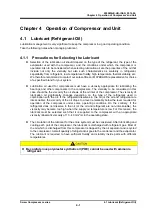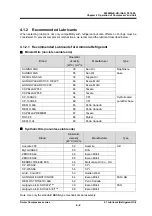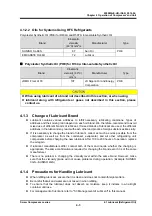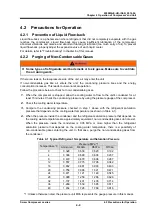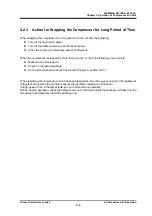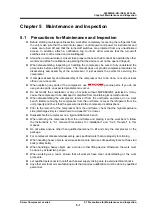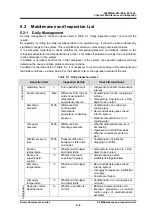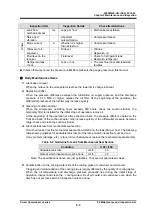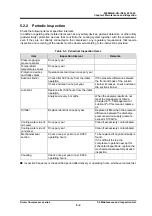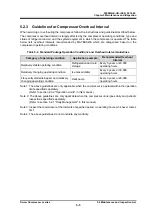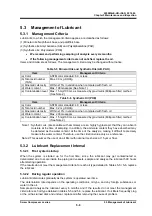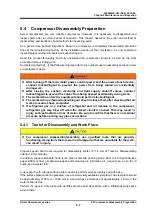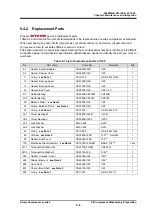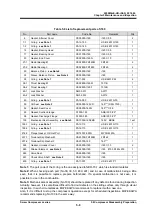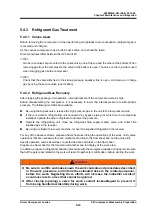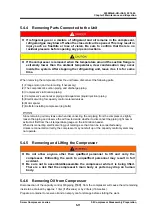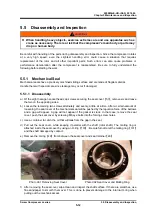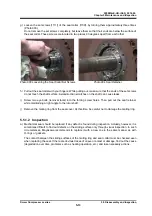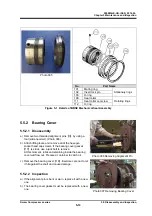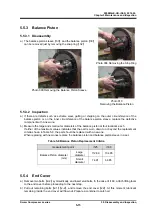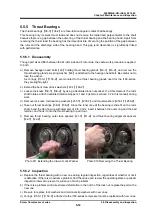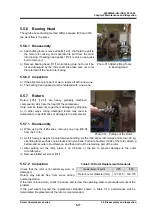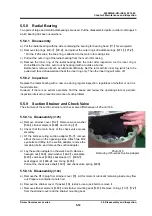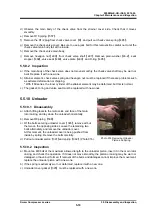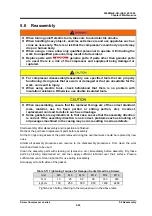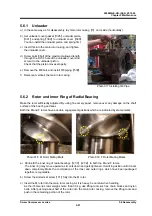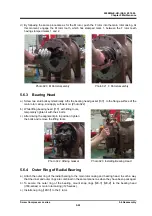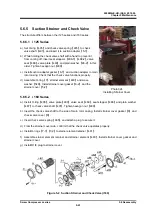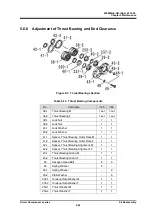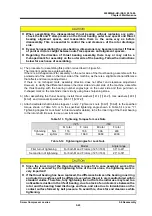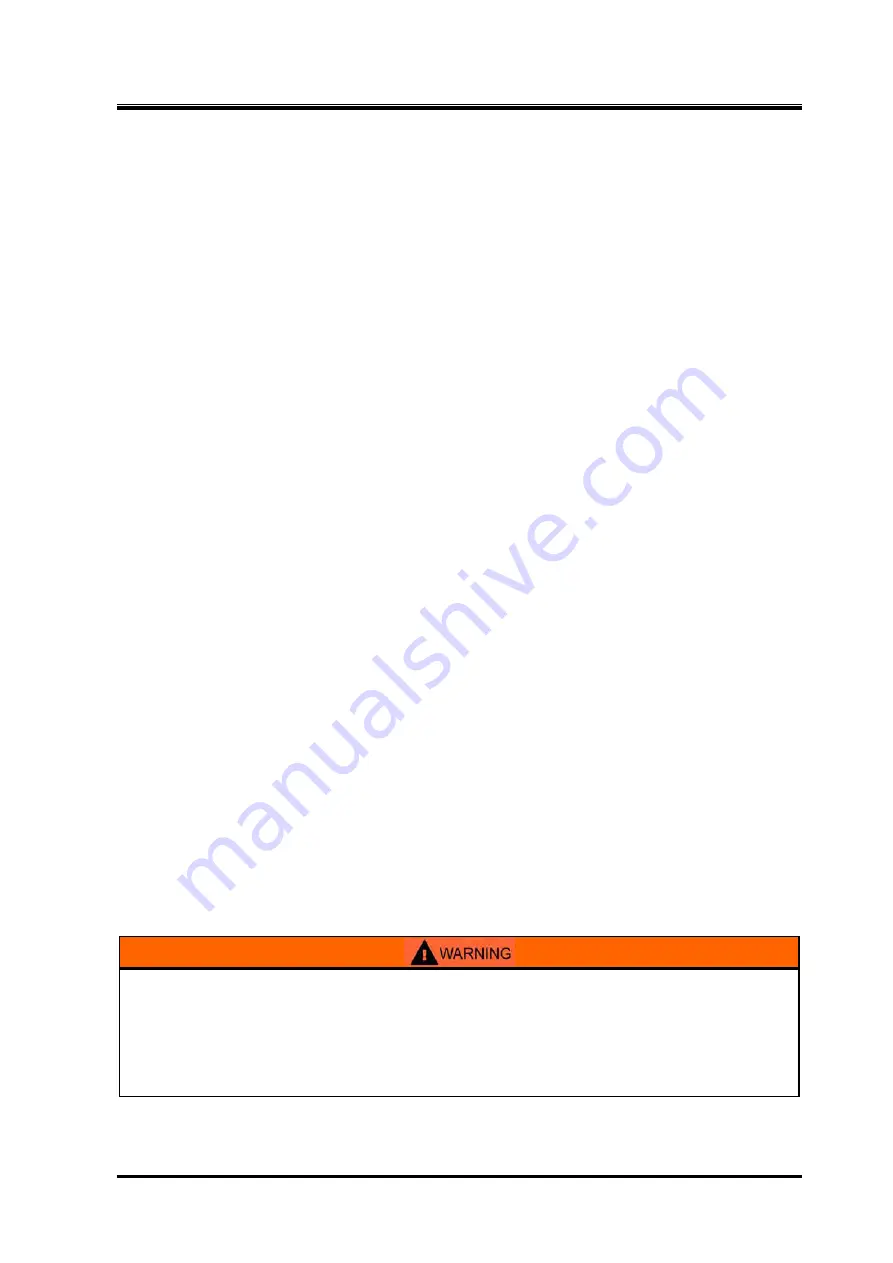
2200M4JE-HO-iS2-N_2014.04.
Chapter 5 Maintenance and Inspection
Screw Compressor i-series
5.4 Compressor Disassembly Preparation
5-10
5.4.3 Refrigerant Gas Treatment
5.4.3.1 Valves
Used
Before removing the compressor or when performing air tightness test or evacuation, refrigerant gas is
recovered and charged.
As the i-series compressor has a built-in check valve, care should be taken.
Work procedures differ between the i125 and i160.
<
i125
>
Two service valves are mounted to the check valve, one at the top and the other at the bottom. When
removing gas from the compressor, the valve at the bottom is used. The valve on the top side is used
when charging gas into the compressor.
<
i160
>
Check that the valve attached to the startup pressure equalizer line is open, and remove or charge
gas by using the service valve (one location).
5.4.3.2 Refrigerant Gas Recovery
After stopping the package unit operation, internal pressure of the compressor remains high.
Before disassembling the compressor, it is necessary to lower the internal pressure to atmospheric
pressure. The following methods are available.
By using the bypass valve, release the high pressure gas in the unit to the low pressure side.
If there is another refrigerating unit connected by bypass piping (or which can be temporarily
installed), operate the other compressor and lower the pressure.
Operate the refrigerating unit, close the refrigerant fluid supply master valve, and collect the
liquefied gas in the receiver.
By using a refrigerant recovery machine, recover the liquefied refrigerant in the receiver.
For any of the above methods, prepare a flow sheet describing the operations of the work. Verify valve
operations that are necessary for each method, according to the flow sheet and on the actual unit.
Specify operation valves as well as connected devices and tubes on the flow sheet.
Prepare one flow sheet for the foreman and another one for display at the work area.
In addition, prepare a refrigerant collection procedure with the workplace situation considered. Be sure
that all the personnel related to the work will read it together for confirmation, before starting the work.
Be sure to confirm and make known the work contents and procedures described
in the work procedure, and inform the estimated risks to the related personnel,
before the work. Neglecting these efforts will increase the industrial accident
occurrence rate to a level that cannot be ignored.
After closing (opening) a valve for work, conduct lockout/tagout to prevent it
from being handled accidentally during work.

